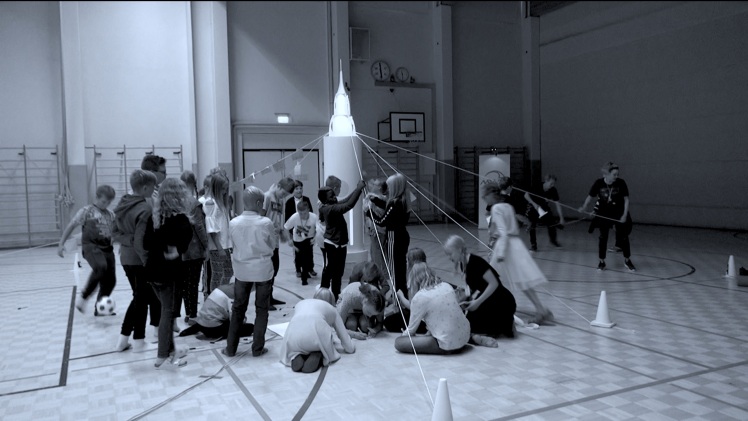Together with Hannah Kaihovirta (university lecturer at the University of Helsinki) and Minna Rimpilä (lecturer at Vasa övningsskola) I have been researching gamification in aesthetic processes within basic education since 2017. Through external funding, I have been able to do so simultaneously with working on my doctoral thesis. Last Friday we presented a conference paper here at ECGBL that concludes this phase of the collaboration.
Gamification entails the use of game mechanical affordances in another context than the game industry (Deterding et al, 2011). Within the core curricula for basic education in Finland, there is an emphasis on using gamification, yet how it should be utilized is up to the teacher. Gamification has traditionally been defined by the use of certain software with a design based on PBL (Points, Badges, Leader boards). This approach is however narrow and currently criticised within research on gamification (e.g. Kasurinen & Knutas, 2018; Koivisto & Hamari, 2019; Nacke & Deterding, 2017; Rapp et al., 2018) and the use of more various game mechanical affordances is emphasized.
We have previously explored the use of visual elements from indie games as affordance and basis for gamification within visual arts education in basic education (Ståhl, Kaihovirta & Rimpilä, 2017; Ståhl, Kaihovirta & Rimpilä, 2018). In this phase of our collaboration we explored game mechanical affordances within an interactive play. The play Världen är så stor (The world is so big) was formed from a collaboration between Vasa övningsskola and Wasa Teater in the autumn of 2018.

Through a teacher perspective, tree levels of gamification emerged within the preparatory work and as part of the interactive play: a structural, narrative and semiotic level. The structural level reflects a traditional view on gamification but did not offer transformation of the theme of the play: experiencing the trials of refugee life as well as child agency. The narrative and semiotic level are based on other game mechanical affordances than PBL, but does offer the students insights into the theme of the play (Ståhl, Kaihovirta & Rimpilä, 2019a).
The following step of the analysis was a student perspective, where the three previous levels were levels and two additional levels emerged: an interactional and environmental level. In line with the narrative and semiotic level, these two levels offered insights into the theme of the play. Therefore, we would like to stress that by including further game mechanical affordances than PBL, gamification as an educational design might offer new possibilities for esthetical processes within education (Ståhl, Kaihovirta & Rimpilä, 2019b).
Although this phase of the collaboration has come to an end, we will continue working together on further researching gamification in education. The next step is an interactive play on virtual environments created and conducted in collaboration with Wasa Teater in the early spring of 2020, so stay tuned!
Thank you Högskolestiftelsen i Österbotten and Svenska Österbottens kulturfond for the research funding!
Further reading
Ståhl, M. Kaihovirta, H., and Rimpilä, M. (2019). Gamifying Classical Literature and Aesthetic Processes – A Student Perspective on an Interactive Play. Proceedings of European Conference on Game Based Learning 2019. Odense, Denmark: Academic Conferences and Publishing International Limited
Ståhl, M. Kaihovirta, H., and Rimpilä, M. (2019). Att spelifiera Topelius – lärarperspektiv på estetiska processer i arbetet med en interaktiv pjäs. I H. Höglund, S. Jusslin, M. Ståhl & A. Westerlund (red.), Genom texter och världar. Svenska och litteratur med didaktisk inriktning – festskrift till Ria Heilä-Ylikallio (s. 289–306). Åbo: Åbo Akademis förlag.
Ståhl, M. Kaihovirta, H., and Rimpilä, M. (2018). Visual Learning and Identity Construction through Gamification in Visual Art Education – A Student Perspective. Proceedings of European Conference on Game Based Learning 2018. Sophia Antipolis, France: Academic Conferences and Publishing International Limited
Ståhl, M. Kaihovirta, H., and Rimpilä, M. (2017). Visual Learning and Identity Construction through Gamification in Visual Art Education. Proceedings of European Conference on Game Based Learning 2017. Graz, Austria: Academic Conferences and Publishing International Limited